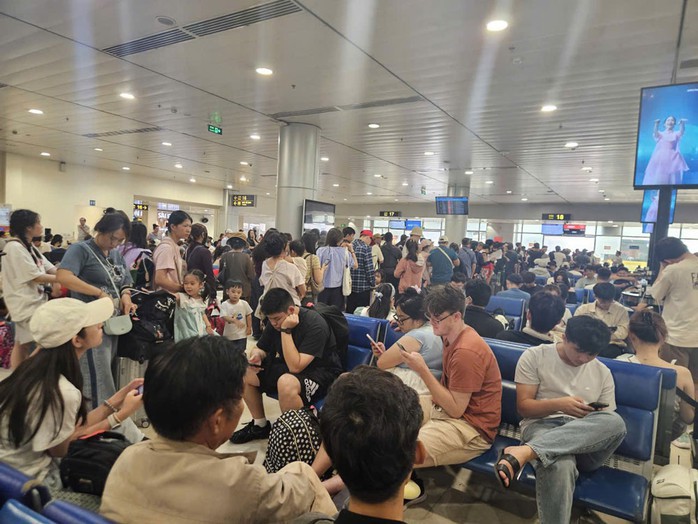Improving airport service quality in Vietnam
(NLĐO) - According to AirHelp’s 2025 global airport rankings, Nội Bài and Tân Sơn Nhất were ranked 242nd and 248th out of 250 airports worldwide.
Despite ongoing investments in infrastructure and services, the poor scores reflect persistent issues including frequent flight delays, lengthy immigration procedures, and steep prices for basic services.
Flight delays, in particular, have become a common grievance. Nguyễn Minh, a frequent flyer who lives in Ho Chi Minh City, reported that none of the 20 domestic flights he took this year departed on time.
Other passengers have echoed similar frustrations, with some international flights reportedly delayed by several hours, causing considerable inconvenience for both travelers and their families.
Tour operators are also feeling the ripple effects, as disrupted itineraries lead to additional costs and diminished experiences for clients.
Lengthy check-in and immigration processes remain major pain points for travelers.
While airports such as Singapore’s Changi and South Korea’s Incheon have adopted fully automated procedures to speed up processing times and reduce operational costs, Vietnam’s key airports have been slow to implement similar systems.

Flight delays on the rise in the first half of 2025 at airports, including Tân Sơn Nhất, impacting passenger service quality. Photo: Lam Giang
Exorbitant prices for food and beverages at airport terminals have also drawn public backlash. Passengers have reported being charged over VND 200,000 (approx. $8) for a sandwich and nearly VND 100,000 for a bowl of pho.
These complaints have prompted authorities to tighten oversight of airport concessionaires and review pricing policies to better align with local income levels.
Despite these setbacks, Vietnam's two busiest international gateways are actively working to improve service quality. Nội Bài has rolled out biometric identification systems, automated check-in counters, and is in the process of expanding Terminal T2 - slated for completion by the end of 2025 - to alleviate overcrowding.
Meanwhile, Tân Sơn Nhất has launched Terminal T3 equipped with facial recognition technology via VNeID, enabling paperless processing and faster check-ins. These upgrades are part of a broader digital transformation initiative across the nation’s civil aviation sector.
Data from the Civil Aviation Authority of Vietnam (CAAV) underscores the urgency of reform.
In the first half of 2025, the industry’s average on-time performance dropped to just 62.6% - a 13.1% decline year-over-year, while the number of flight cancellations rose to 844, up 0.2% from the same period in 2024.
Experts argue that embracing cutting-edge technologies such as automated immigration gates and self-service baggage systems will be essential to improving operational efficiency and passenger satisfaction.
These changes, they say, are critical to enhancing Vietnam’s aviation profile and ensuring the country's long-term competitiveness in the global travel market.
